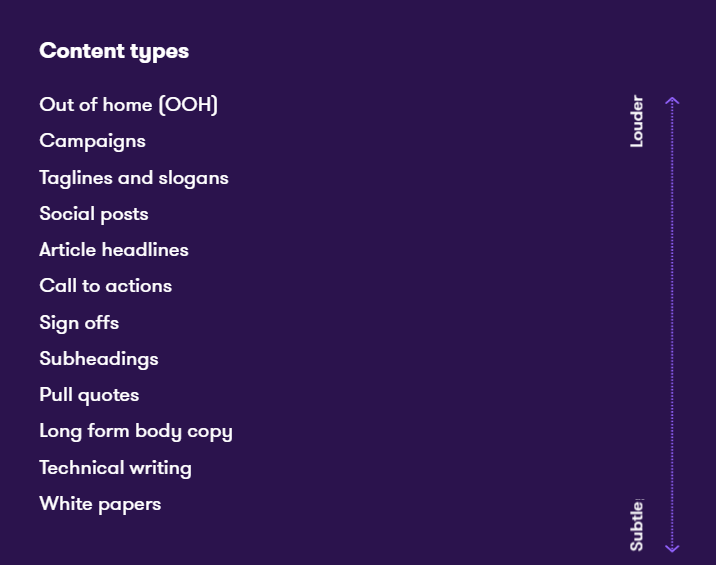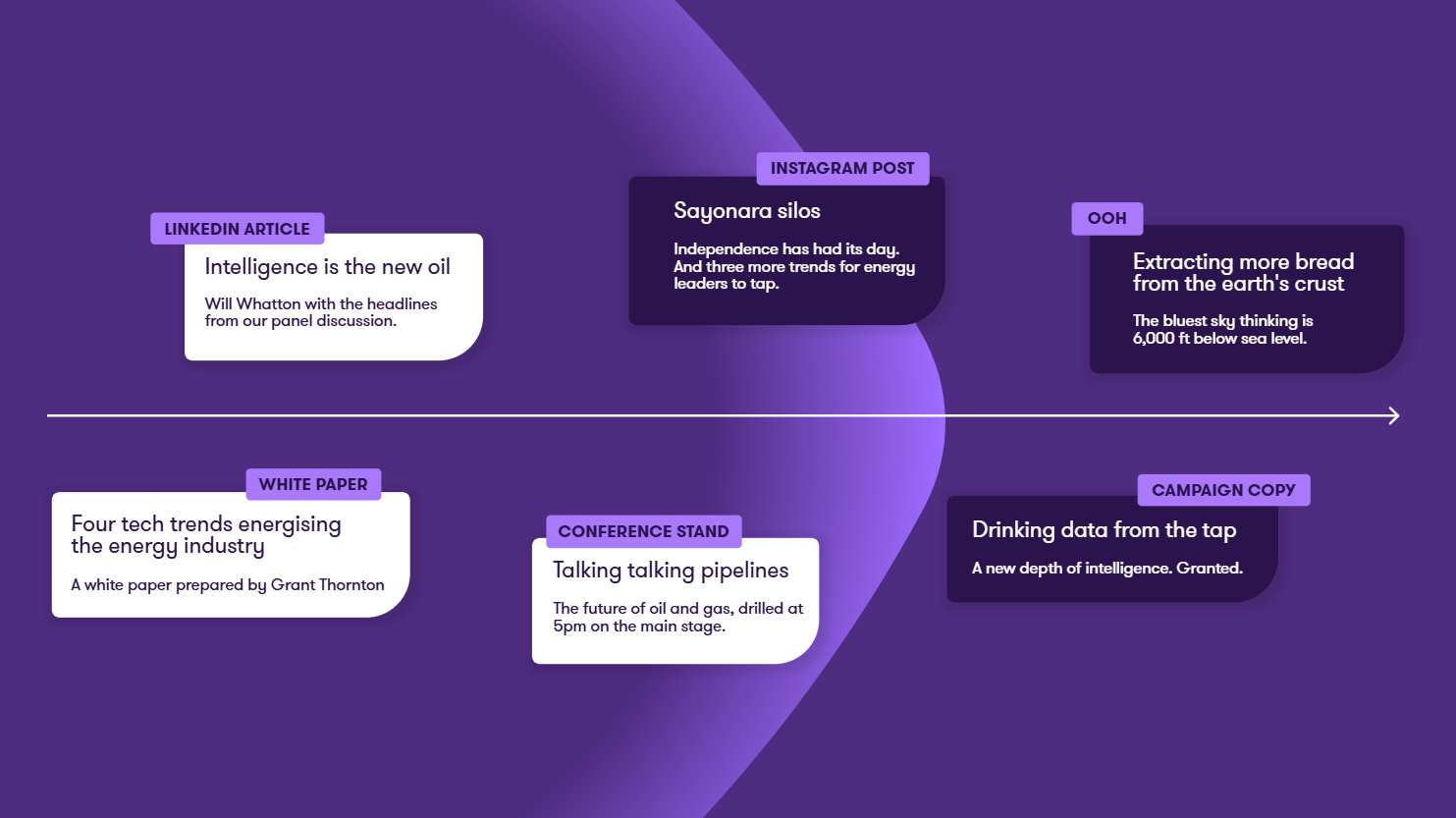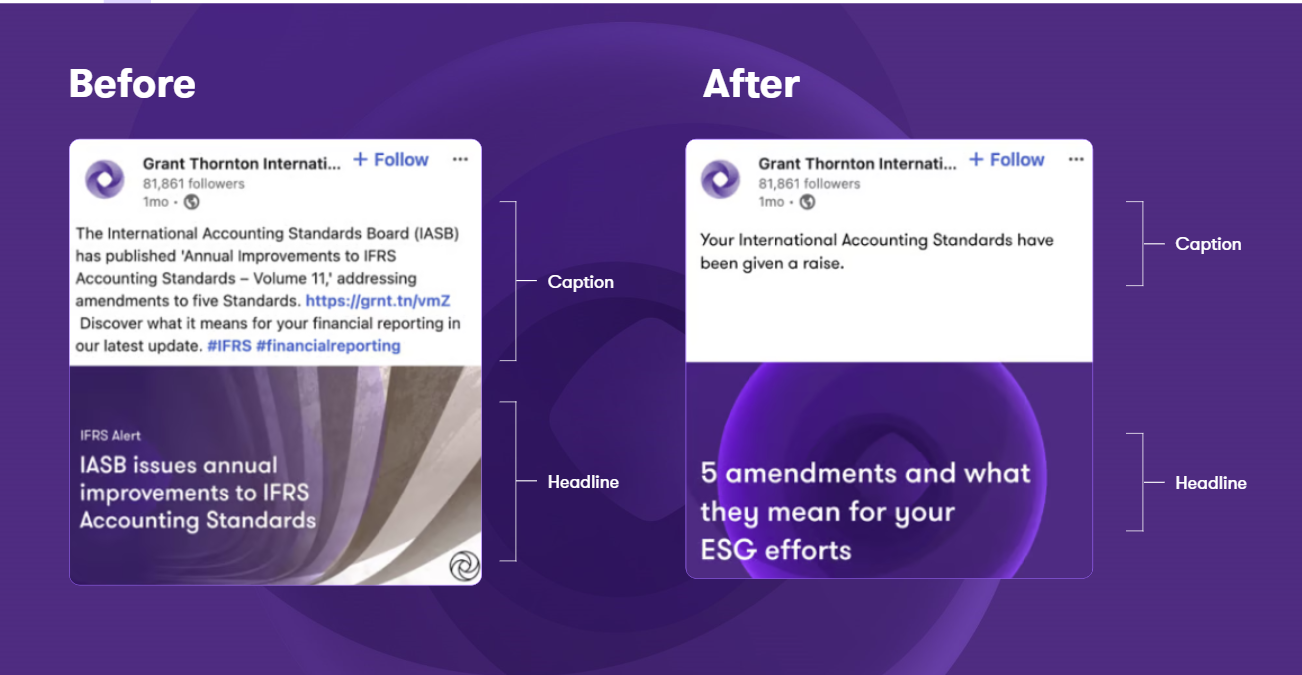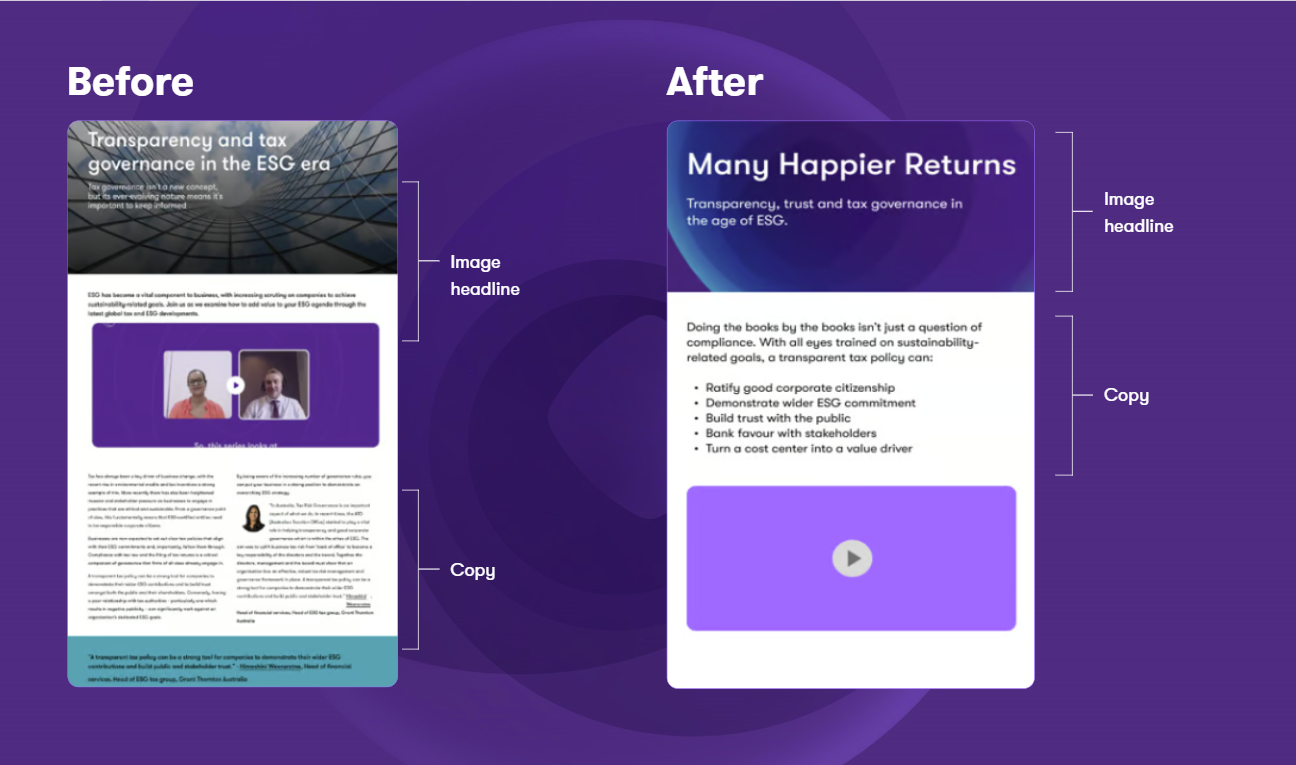Our tone of voice aligns to our brand differentiators
Responsive
Confident and knowledgeable. We show up with positivity and quality to earn trust.
Collaborative
Conversational and inclusive of diverse perspectives. We speak to you and ask for input.
Gritty
Plain and clear, without jargon or ego. We speak honestly and meet challenges with action.
Personal
Warm and clever. We sound real, relatable, and show you our sense of humor.
Grant Thornton’s brand is unique because it is rooted in differentiators, a purpose and a promise that are unique to Grant Thornton and its people. Our voice is an expression of that brand.
How we use our voice
Responsive
Confident and knowledgeable. We show up with positivity and quality to earn trust.
Do
- Use active voice.
“We solved the problem” not “The problem was solved.” - Nail the most important thing in the first line.
Write like your reader is scrolling their phone between meetings. - Respect people’s time.
Keep the word count as low as possible. - Lead with statistics.
Specific numbers (particularly percentages) are more persuasive than approximative words.
Don’t
- Negativity.
Even critical information can be presented with confidence and optimism. - Rhetorical questions.
Be a resource for answers—not lost threads. - Small talk.
The friendliest thing you can do is get to the point. - Hedging.
Say with clarity what you’re sure of.
Collaborative
Conversational and inclusive of diverse perspectives. We speak to you and ask for input.
Do
- Speak as a person to people.
“We,” “I,” and “you.” Not “Grant Thornton” and “our customers.” - Be audience centric.
As a rough guide, say “you” three times as often as you say “we.” - Make it relevant—or delete.
Focus every word you write on what the reader needs to know. - Look outside ourselves.
Platform and welcome multiple, diverse perspectives. - Localize.
Think what works best for your audience and market culture and context, and apply it.
Don’t
- Obsess with ourselves.
Talk about our clients and let the work speak for itself. - Overly formal.
Two-way conversations are about being business casual, not black tie. - Too complex for comfort.
Write so that we can understand each other.
Gritty
Plain and clear, without jargon or ego. We speak honestly and meet challenges with action.
Do
- Minimize buzzwords and clichés.
Like “synergy,” “gamer changer,” and “transformation.” - Avoid acronyms.
Unless you’re 100% sure your audience already knows them.’ - In a case of two synonyms, pick the simple one.
“Use” instead of “utilize,” “allow” not “facilitate,” “start” over “commence.” - Speak frankly.
If you have bad news to share, break it clearly and early
Don’t
- Put conciseness above clarity
If after reading, you need to find out more elsewhere, we’ve failed at our job. - Skim the surface.
You should distill the detail without losing sight of the depth. - Understated, not un-technical.
Don’t let language get lax with specialized
Personal
Warm and clever. We sound real, relatable, and show you our sense of humor.
Do
- Think normal, not formal.
“We’re happy to say” beats “We are pleased to announce.” - Real people use contractions.
It’s, she’s, we’d, don’t, can’t, you’re. They’re all fine. - Relax your syntax.
It’s perfectly okay to start a sentence with a “But,” “So,” “Because” or “And.” - Aha, not hahaha.
Aim for smile in the mind, not a laugh out loud joke. - Take a familiar idiom or common phrase and twist it.
Changing one world is usually enough. Such as, “Great minds. Nothing alike.”
Don’t
- Hide our humanity.
Sure, we’re a company—but people are what make us us. - Be too friendly, casual or sloppy.
Respect the difference between a client and a friend. - Jokes, gags, puns.
We’re advisors with clever sense of humor, not comedians with a day job. - Snarky or overly intellectual.
Think smart. Not snobby. - Overdoing it.
One glint of wit is enough to warm a reader.
Personalize it with tone
We flex the tone – raising and lowering the volume of our voice – according to the time, place and type of content. Always use your own judgment. But keep this as a guide.

We change our tone, or the volume of our voice, according to the context. Use your knowledge to tailor the voice and tone for each audience, in each context.

Tone of voice examples
Short form example: LinkedIn posts

What we’ve done
- Broken the ice with unexpected wordplay – Standards given a raise
- Avoided acronyms – except for ESG which is universally understood
- Put the audience centre stage – deleting anything that’s not relevant
Long form example: Mobile blog posts

What we’ve done
- Tapped category language – Many happy returns
- Nailed the crux of topic in the first line
- Used bullet points in body copy – in this case, instead of it
© 2025 Grant Thornton
Last updated: May 2025
Any questions?
Please contact: dane.contor@us.gt.com
